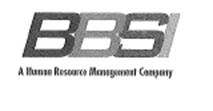CORRESP: A correspondence can be sent as a document with another submission type or can be sent as a separate submission.
Published on September 21, 2011

September 21, 2011
Submitted on EDGAR under "CORRESP"
Ms. Kathryn Jacobson
Division of Corporation Finance
Securities and Exchange Commission
100 F Street, NE
Washington, DC 20549-4561
Subject: Barrett Business Services, Inc.
Form 10-K for the fiscal year ended December 31, 2010
Filed April 1, 2011
File No. 0-21886
Dear Ms. Jacobson:
We are in receipt of Larry Spirgel's letter dated August 23, 2011, regarding the subject filing. Our responses correspond to the numbered comments in the letter.
Goodwill and intangible assets, page F-9
1. We note your response to comment one from our letter dated June 30, 2011. You refer to having discrete financial information available for both your geographic regions for the purposes of making decisions about resource allocation and performance assessment. Please identify both geographic regions since each appears to meet the definition of an operating segment under ASC 280-10-50-1. Although you may be able to aggregate both geographic regions for reporting purposes, you will not be able to aggregate them for impairment testing purposes. Please tell us whether you will achieve the same result if each of the geographic regions is tested separately for impairment.
Response:
To clarify, we have only one operating segment, which is at the entity level and is consistent with how we manage our business. We operate 43 branch offices, each conducting business with the same service offerings. The Company’s chief operating decision maker, Michael Elich, does not regularly review the results of our 43 branch offices. Instead, Mr. Elich participates in and oversees all significant investment, marketing, and strategic business decisions with emphasis on the performance of the business as a whole rather than focusing on branch-by-branch operating results. The chief operating decision maker reviews weekly reports that contain high level information (revenue, payroll, payroll taxes and workers’ compensation expenses) on a companywide, geographic and branch level basis. However, the chief operating decision maker’s review of this information is for anomalies only. Detailed review of the branch level operating results is limited to branch and mid-level management.
Ms. Kathryn Jacobson
Page 2
Accordingly, we have determined that the Company has one operating segment.
We have also determined that the reporting unit for purposes of our goodwill impairment test is at the operating segment level because the branch offices do not have dissimilar economic characteristics.
2. We note your response to comment two from our letter dated June 30, 2011. Since the insurance entities are evaluated in the context of your overall self insurance program as further described on pages 10-12, they appear to be more than incidental to your operating activities. If you disagree, please advise us. Refer to ASC 280-10-50-4.
Response:
As described in our disclosures, our primary service offerings are professional employer organization (“PEO”) services and temporary staffing services. Workers’ compensation coverage is included as a component of our PEO services. We are required to provide such coverage for our temporary staffing employees. The Company has elected to be self insured for workers’ compensation and has developed extensive risk management practices to mitigate the financial costs of these uninsured risks. To more effectively manage the cost of our third party insurance for catastrophic losses, we formed the two insurance entities, allowing us to raise our retention levels. These two entities are not providing services separate from the core service offerings that were provided prior to their formation and do not have any material activities beyond the workers’ compensation self insurance program.
On page 10 of the Form 10-K we stated that the workers’ compensation programs are a principal service provided to the Company’s customers. This statement was an error and will be corrected in future filings, as the insurance programs are a cost of doing business and not a separate line of business as discussed above.
Ms. Kathryn Jacobson
September 21, 2011
Page 3
While these entities are a significant component of our risk management programs, they do not require significant incremental cost or management oversight beyond those already incurred as part of our core business. The combined costs of operations, excluding the costs for uninsured claims and third party insurance, for these two entities included in our operating results for the year ended December 31, 2010 were approximately $400,000.
Fair Value of Financial Instruments and Concentration of Credit Risk, page F-17
3. We note your response to comment three from our letter dated June 30, 2011. Please provide us your proposed disclosure that you will include in future filings. In particular, we note on Page F-7 that $23 million out of $24 million of your marketable securities were invested in municipal bonds. Additionally, $27 million of your cash and cash equivalents were invested in tax-exempt money market funds. Please address in your proposed disclosure any concentration and credit risk associated with your investments in tax-exempt money market funds and municipal bonds.
Response:
Our proposed disclosure is as follows:
We generally place investments with high-credit quality issuers and, by policy, limit the amount of credit exposure to any one issuer. Substantially all of our investments in debt instruments are with A/A2 or better rated issuers. Our investment policy requires substantially all investments with original maturities at the time of investment of up to one year to be rated at least A2/P2 by two national rating organizations and investments with maturities greater than one year to be obligations of issuers rated BBB-/Baa3 or better. As of December 31, 2010, the total credit exposure to any single issuer, excluding U.S. Treasury securities, did not exceed $2.0 million.
A substantial portion of the Company’s cash and cash equivalents is invested in tax-exempt money market funds managed by the Company’s principal bank.
Related Party Transactions, page F-24
4. We note your response to comment four from our letter dated June 30, 2011. It is unclear to us why you utilized land values based on the residential real estate market and how they could be a surrogate for commercial real estate assessment. Additionally, please tell us how you considered estimates of future cash flows based on service potential in testing the recoverability of your land investment. Refer to paragraphs 33 through 35 of ASC 360-10-35.
Ms. Kathryn Jacobson
September 21, 2011
Page 4
Response:
The carrying amount of the investment in land is not material to our financial statements. The carrying amount represents less than 1% of the Company’s total assets. The approach described in our initial response was developed to provide a high level assessment of the magnitude of any potential impairment. Based on our assessment, we believe the carrying value of the land is recoverable. The land is not used in our primary operations and is being held as a long-term asset that we do not propose to sell in the near term.
Subsequent Event, page F-32
5. We note your response to comment five from our letter dated June 30, 2011 and reissue our comment. Tell us how you accounted for the cost of the premiums associated with Mr. Sherertz' key man life insurance policy and whether it had a carrying amount in the balance sheet, including a cash surrender value, if any. It does not appear that you recorded an asset for your investment in Mr. Sherertz' life insurance contract. We refer you to the accounting guidance in ASC 325-30-35.
Response:
The life insurance coverage was a term life policy which had no cash surrender value. The cost of the key man life insurance premiums was expensed as a period cost and included in the selling, general and administrative expenses line item in the Company’s consolidated statement of operations.
Please feel free to call me at 360-828-0700 if you have any questions regarding the information contained in this letter.
